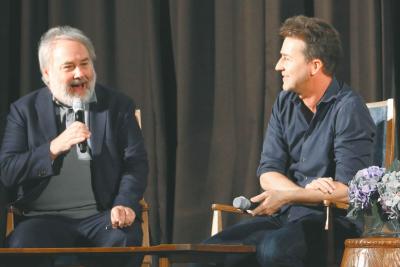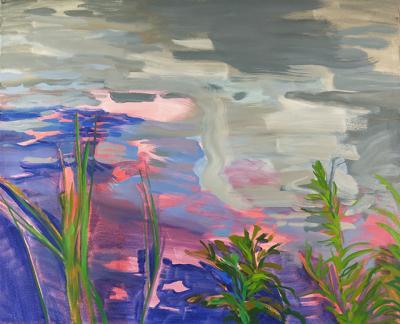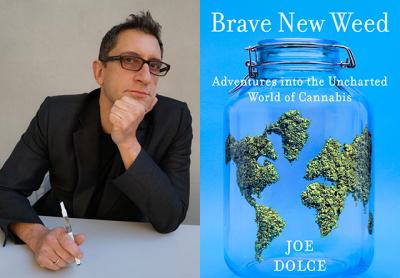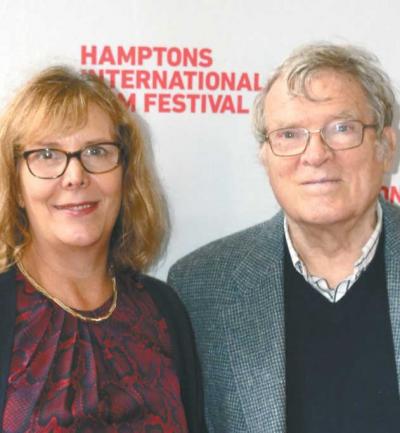Female Filmmakers Buck the Industry
Female Filmmakers Buck the Industry
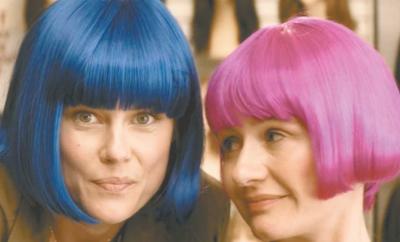
One of the many surprises in “Wig Shop,” Kat Coiro’s compelling 15-minute contribution to the Hamptons International Film Festival’s program of shorts by female filmmakers, was Emily Mortimer’s performance as an Orthodox Jewish woman. The actress, who plays a world-traveling, hard-driving producer in the HBO series “The Network,” is absolutely convincing as a timid, anxious wife who reluctantly arrives in her white Lexus at a wig shop in a black neighborhood in south-central Los Angeles. Ms. Mortimer and her husband, the actor Alessandro Nivola, both of whom have strong family connections to the East End, are among the film’s co-producers.
Ms. Coiro was one of six female directors and producers who shared the tight stage at Rowdy Hall for Sunday’s Winick Talk, “Women in Film: Lots of Talk, Any Action?” Moderated by Thelma Adams, a novelist and New York film critic, the panel considered the difficulties faced by women in the film industry and the efforts underway to create more opportunities in every area of the business.
Anne Hubbell, a producer, summed up the panel’s consensus early on. “When we change who’s telling the stories, we change the stories that are getting told.” Ms. Hubbell has put that tenet into action as co-founder of Tangerine Entertainment, the first production company focused on media by women directors.
Ms. Adams asked each of the filmmakers to talk about how they managed to surmount the challenges faced by women in the industry. Chris Hegedus, whose career as a documentary filmmaker spans 40 years, recalled that when she was thinking of a career in the 1960s she had never heard of women directing films. “I didn’t think of it as a career until I saw some experimental films by Shirley Clarke and Maya Deren.” While putting on a film festival, she realized that women were working on many of the early cinema verité documentaries, and a long career followed.
Other panelists with films in the festival were Jessie Auritt, the director of “Supergirl,” and Kahane Cooperman, who directed “Joe’s Violin.” Alexis Alexanian, a producer who was a partner of the late Gary Winick, a director/producer and a longtime supporter of the festival, rounded out the panel.
Each speaker followed a distinctive career path. Ms. Coiro started out as an actress. “I started making shorts and starring in shorts, because I was the only actor who would trust me.” Most of the women did not attend film school. “Making ‘Supergirl’ was my film school,” said Ms. Auritt, who also learned her craft directing, producing, and shooting web video.
Ms. Kahane’s first effort was shot with a borrowed camera, cost $50, and won a $75 prize. “I got the buzz from that, and I went to Columbia’s graduate program in screenwriting and directing.” While that program focused on narrative film, “I went against the tide and made a short 16mm film that, while it was puzzling to the school, premiered at Sundance.”
The discussion segued into a consideration of obstacles and how to overcome them, despite the fact that, as Ms. Hubbell pointed out, “The numbers haven’t changed much in the past 40 years . . . there’s a need for a more systematic approach. We need women in the writers’ rooms, we need women who are partners in big entertainment law firms, we need female partners in the major talent agencies.”
The field of advertising is one of the worst, according to Ms. Coiro, who noted that only 3 percent of directors in that field are women. Ms. Hubbell added that reviewers are 80 percent male and therefore “dominate what we get to read. We don’t have enough female voices in criticism, and that very much influences things.”
Although there is a large audience for women’s films, that doesn’t translate into a similar proliferation of them, Ms. Adams observed. Ms. Hubbell added, “At one point this year 20 percent of the top 10 moneymaking films were directed by women, but only 4 percent of all films released had female directors.”
Other opportunities, in addition to Tangerine, include the 51 Fund, a partnership between an actress-writer and a Wall Street woman that aims to finance more films by women, and Fork Films, which supports many films by women and stories about women.
In addition to all the statistics that dramatize the need for opportunities, the program of short films cited above, “New York Women in Film and Television: Women Calling the Shots,” makes it clear that the talent and imagination of female filmmakers is abundant. It’s the industry that needs to provide outlets for them.

